Vietcong raids and ambushes
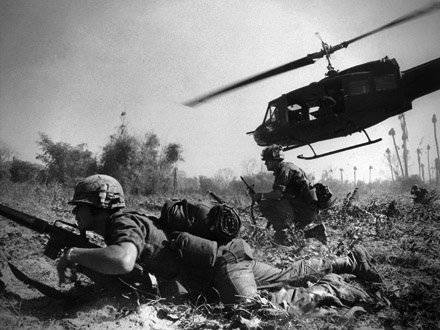
During the long years of the Vietnam War with the American aggressors, the South Vietnamese partisans — the Viet Cong and regular units of the army of North Vietnam — managed to gain a wealth of experience in sabotage actions.
They carried out bold and effective raids on bases and airfields, organized equally effective ambushes on transport convoys, which supplied the existing units and formations of the American army.
ATTACK
During the war, the one on whose side the initiative wins. The American command was aware of this and sought to seize the initiative. Therefore, after receiving intelligence information about the situation on the border with Laos, it began to plan and implement a response to the beginning of 1969. The operation received the code name "Dewey Canyon". The objective of the operation is to disrupt and stop the enemy’s logistical support in the A-Shau valley and, in particular, in the base area of the North Vietnamese 611 army.
During the Vietnam War, any, even the smallest victory, which had a local tactical value, had a strong influence on the mood of the population in both South Vietnam and the United States. That is why the logistics and transportation support systems created to ensure the success of the offensive operations of the army of North Vietnam should have been destroyed before they were used. In this situation, there was no point in continuing to conduct operations only against the partisans of South Vietnam. The command of the US Army has decided to give battle to the army of North Vietnam.
Operation "Dewey Canyon"
In response to the threat of invasion of North Vietnamese forces from Laos, the Americans planned to launch a preemptive strike against enemy headquarters and elements of the enemy’s rear and transport infrastructure deployed in border areas, thereby depriving it of access to key locations.
For the operation "Canyon Dewey" was selected 9-th regiment of the US Marine Corps. The regiment fighters were well prepared both physically and psychologically for action in the harsh conditions of the Dewey Canyon area. They had experience in conducting diverse operations in the jungle, such as airborne operations using helicopters, fighting in mountainous areas, creating fire support bases and building landing sites. Acting in the jungle, they gained the experience of surviving in these conditions. For planning the operation was allotted five days.
At this time, aerial reconnaissance confirmed the presence of concentration of enemy troops at a height with a mark of 640 meters four and a half miles from the Laotian border. Subsequently, at this altitude, the Cunningham fire support base was equipped and the command post of the operation was organized.
Creating a base "Cunningham"
After the areas have been processed aviation ammunition, units of the 9th Marine Regiment were airborne from helicopters to selected landing sites 1700 meters from the Ko Ko Wa Range. This ridge had the shape of a boomerang and stretched from east to west for about half a mile. Its southern side ended with an almost sheer cliff. Not meeting resistance, the landed marines ensured the free advance of the 3rd battalion of the 9th Marine Regiment and the engineering division of the battalion, which began to equip the fire support base.
At the direction of the enemy's likely attack, wire barriers were installed, and signal and anti-personnel mines were installed. For all fireplaces are indicated the shelling sector. Thus, a circular defense base was created. Outposts were arranged in convenient and advantageous places for defense. Were equipped with listening posts, which allowed to preempt the attack of the enemy or his attempts to covertly penetrate the object. Since these observation and listening posts should remain unnoticeable, their locations constantly changed. In addition to these security measures around the base was organized short-range patrols.
Vietnamese response
Marines from the moment of disembarkation and throughout the subsequent time were closely monitored by Vietnamese scouts. Soon they were able to establish that this place was equipped with nothing more than a command and control center for all the marine operations in the area. In this regard, the command of the North Vietnamese army set the task for its sappers to carefully study the engineering structures of the new American base, identify weaknesses in the defense and give their proposals for developing a plan for attacking it. After studying these proposals, the command of the army of North Vietnam set the task for the sappers of the 812 regiment to attack the Canning fire support base.
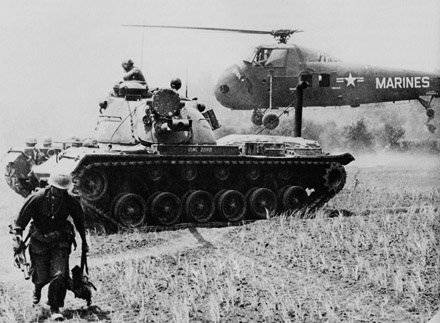
Their main task was to overcome the defense of the marines and to inflict maximum casualties on personnel, to destroy equipment, artillery systems and their positions, after which they should make a withdrawal. In developing the plan of the operation, it was not planned to capture and hold these positions with the aim of seizing this dominant height in the region.
The week was spent on conducting detailed intelligence.
Raid plan
By 16 February 1969, North Vietnamese sappers were ready to attack the base. In the period of preparation for the operation, necessary instructing and training were conducted. Sandy models of the terrain were prepared, in which all positions of marines were reflected in detail. Each sapper received precise instructions regarding his personal task. The concentration of fire support was planned and carefully checked and re-checked. The sappers used multicolored flares to give signals: red marked areas that were difficult to penetrate; white light gave the signal to departure; green meant victory; green, followed by white, meant a request to send reinforcements.
Sappers were organized into five groups. The first group consisted of 16 people, who, in turn, were divided into four teams of four people. The first team was aimed at the command post and the position of the mortars. The second was to attack on the right flank and go to the helipad.
The third team was to attack on the left flank and break through the landing pad. The fourth team was to attack the heliport in the center.
Extend to the object
Attacking units moved from different base camps to 7.30. Using previously explored and selected routes, they secretly made their way to the final area of concentration. To 18.00, all groups of North Vietnamese sappers were secretly concentrated just a hundred meters from the barbed wire that surrounded the Cunningham base. In the weak moonlight a thick fog enveloped not only the object of attack, but also all the approaches to it. The sappers assumed that most of the base’s defenders would be hiding in their bunkers when the mortar shelling of the object, which preceded the raid, would begin. Therefore, as soon as the attackers overcome the obstacles and suppress the enemy's defensive fire, the bunkers will turn from shelters into deadly traps for the marines.
Plaque
Exactly at two o'clock in the morning, mortars of the North Vietnamese army brought down fire on previously selected targets. The deadly precise mortar fire forced the Marines to take refuge in bunkers, where they felt safe under the cover of powerful ceilings. Even among the crash of ruptures, destruction, and confusion, it immediately became clear that the key objects of the base had been subjected to intense shelling. Marines, struggling with the destruction and patching holes in defensive structures, were forced to constantly bend down. The Lima company of the 3 battalion of the 9 regiment occupied the defensive positions on the northern slope. Positions on the flanks and on the southern slope of the ridge were held by marines, artillerymen, and the headquarters team of Colonel Barrow. In addition, the rapid reaction squad, which consisted of fifty marines of the communications unit, engineers, and the headquarters section of the headquarters group, was in reserve.
The intensity of the mortar fire reached a “crescendo” on 2.15 when groups of North Vietnamese began an assault, trying to break through defenses. The first wave of attackers advanced from the northeast. To make passes in the barbed wire, the sappers used the so-called "torpedoes of Bangalore", which were a 200-gram charge of TNT tied to a bamboo stick.
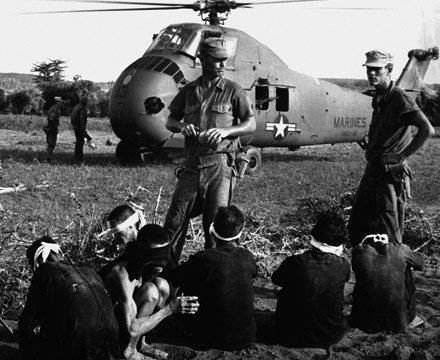
The ingenious path of attack was laid through one of the many garbage dumps, where worn-out pants and other rubbish lay around, as it allowed access to all the main battery objects. To overcome the obstacles, mats, bundles of branches and grass and other available materials were thrown over the wire. When the mortar fire stopped, the bombers opened fire with rocket-propelled grenades, and the sappers began to undermine their backpack charges and “Bangalore torpedoes”, creating the impression that the defenders continued mortar shelling and forcing them to remain in shelters. The roar was deafening. Vietnamese sappers who broke through the barbed wire threw grenades and backpack charges into all the holes they could detect. The fire of the grenade launchers and machine guns of the main ground attack group was focused on the cracks and embrasures of the bunkers.
Base defense
Despite the confusion and difficult situation, the marines rather quickly realized that they had been subjected to a ground attack in addition to the shelling, and fiercely responded with fire, making organized efforts to clear the base from the attackers, while being under intense mortar and grenade launcher fire.
This attack by the Vietnamese sappers became an unforgettable experience for Captain 2 of the rank of David Brock, who later became a divisional chaplain. He recalled: “At the very beginning of the attack, a Vietnamese soldier stuck his head in a tent where I and two others were, but for some reason did not throw the grenade inside. He threw her into a small bunker, a few steps away from us, where she was killed by two of her explosions. The shootout continued until 7.45. in the morning, and all this time I was with the doctor in the first-aid post, where I performed rituals for the dead and provided assistance to the wounded. For two hours it seemed that our medical center was the last surviving position. ”
One of the officers was almost buried under the ruins of a bunker during a mortar attack. When he got out from under the ruins, he came face to face with one of the Vietnamese sappers. The marine held a grenade in his hand, but was too close to the enemy to use it for its intended purpose. Then he jumped at the amazed enemy soldier and scored with a heavy grenade.
Marines of an artillery battery armed with a machine gun in the southeastern part of the base attacked and destroyed six Vietnamese soldiers who were trying to organize a stronghold inside the perimeter. Indian battery cooks destroyed 13 Vietnamese from the Browning 12,7-mm machine gun.
The divisional fire control center was incapacitated, and only one serviceable howitzer remained. Between 4.10. until the dawn of the marines, only one mortar continued to fire. The mortar calculation remained at the firing position during the entire attack, reestablished contact with the commander at the fire control center, and fired a total of about 380 mines against the enemy.
Despite the fact that the enemy broke through the perimeter, the marines held the line of defense, and sometimes the opposing sides separated the enemy from the ground. Those soldiers who did not directly participate in the battle with the enemy, were engaged in the coordination of high-power anti-tank artillery fire or provided assistance in other matters.
To illuminate the perimeter outside the wire fence, a special plane was called up, which circled over positions throughout the night until dawn, while the battle was on. They also had to fire nearby artillery batteries located at other bases, which provided serious support to the Cunningham Marines. This did not allow the enemy reinforcements to approach, broke his communications and made it difficult for the attackers to retreat to the main forces of the formation. Around 5.30, the Marines completed a reorganization of their positions and began slowly but methodically suppressing the attacks of the Vietnamese sappers. At dawn, the battle began to subside, but it still lasted even before 7.00.
Losses and results
When it became clear that the attackers had completely retreated, it was time to calculate their own and other people's losses. Total counted 25 killed Vietnamese sappers within the wire fence. During the search, the Marines found 26 X-guns for the RPGs, Chicom 25 grenades, bamboo bombers 253, 7 rifle grenades, 12 packets, two radio stations, AK-11 X-guns and a large number of signaling rockets.
In the final calculation of their losses and losses of the enemy, it turned out that the Vietnamese had lost 37 people killed. Four marines were killed by the marines and 46 was wounded in battle. In the battery "E" of the second division 12 people were seriously injured.
But the losses did not confuse the Viet Cong partisans, nor the regular parts of North Vietnam. At that time, the military and political leadership of North Vietnam was strongly influenced not so much by Soviet advisers as by the Chinese. And Mao Zedong was one of theorists and practitioners of the rebel and guerrilla war. One of his authorship is the tactic of "human waves", which ignores the losses incurred and evaluates only the achieved result. That is why, despite the expansion of the tactical zone of responsibility of the Marines, the enemy had the opportunity to organize well-coordinated, well-coordinated lightning-fast attacks, similar to the raid in Da Nang, which was carried out on July 1 of the same year.
Raid on Chu Lai airbase
In the evening of October 27, Viet Cong partisans hit the newly built “Marble Mountains” helipad on the Tiensh peninsula and the SATS field airfield in the Chu Lai region.
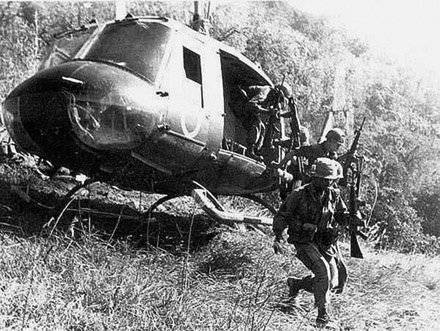
On Chu Lai, the enemy penetrated the Marines' base from the northwest and divided into two groups. The commander of MAG-12, Colonel Brown, recalls:
“A couple of the planes were on fire, and the Vietnamese sappers penetrated to the intact. The attackers were barefoot and had only a loincloth. They poured planes from their Tommy-gans in bursts ... threw bags with charges into tail nozzles ... Then some left and some didn't, but the final effect was that the machine-gun fire caused a leak in the fuel tanks. The outflowing fuel infused the entire area, it ignited - so both the earth and the planes were on fire. ”
Marines killed from 15 to 20 Vietcong, but first they managed to destroy two A-4 attack aircraft and seriously damage another six.
The raid on the field airfield "Marble Mountains"
The communist attack on the Marble Mountains airfield was more powerful and better coordinated. A Vietcong raid party numbering roughly 90 people covertly gathered in a village located in the northwestern part of the Marble Mountains airfield. Under the cover of 60-mm mortar fire, four demolition teams put the runway and the hospital out of action. Six Vietcong fighters, armed with “Bangalore torpedoes” and grenades, reached the site of the 16 th Marine Corps Air Group. The commander of the 16 Air Group, Colonel O'Connor, recalled: “I woke up shortly after midnight from the sounds of explosions ... arriving at the command center of the group, I received a phone call from General McCutchen. He warned me that the airfield at Chu Lai was attacked, and said that we must be on the alert. ”
After leaving the command post, Colonel O'Connor drove to the aircraft landing area, where all the helicopters were already burning. Before the attack was repulsed, the Vietnamese managed to destroy 19 helicopters and damage 35. Half an hour later, the Viet Cong fighters retreated, leaving 17 dead and four wounded. American casualties were estimated at three dead and 91 injured.
The Vietcong attacking units in both Chu Lai and Da Nang (“Marble Mountains”) were not regular partisans. There were clear signs that these units belong to the main rebel forces, as they were distinguished by a high level of training and discipline. They were well armed, equipped and equipped. In the Marble Mountains area, the Marines found significant stocks of fragmentation, high-explosive and thermite grenades, as well as three “Bangalore torpedoes”, several B-40 anti-tank grenades made by China, as well as various ammunition. US units also captured several small units. weapons: 7,62-mm AK machine gun, two 43-caliber machine guns, and a Tokarev 7,62-mm gun.
Success preventive action
Do not think that all the attacks of the Vietnamese were successful, and the Americans could only passively defend themselves. Where the complex of measures for the protection and defense of objects was carried out to the full extent, including active actions aimed at preempting the attack of the enemy, the Vietnamese attacks could be frustrated.
Here are examples of such successful preventive actions.
On October 28, the enemy also planned to launch an attack on the main airfield in Da Nang. But this attack was thwarted by two unrelated cases.
General Walt's headquarters received the news that the Viet Cong battalion had left its area, located ten miles south-west of Da Nang, and was moving in the direction of the airbase. This information was transferred to firing positions, and in 19.30 the artillery division fired 680 shells along the route of the Viet Cong battalion. Later, reconnaissance confirmed a salvo hit the target. The Vietnamese battalion, coming under artillery fire, was dispersed.
Shortly thereafter, a detachment of marines from the 9-th regiment ambushed a large unit of the Viet Cong, not far from the village of An Tu, five miles from Da Nang. A patrol of eleven marines arrived in the area of the mission after dark. By 19.45, he equipped his positions, and after just 13 minutes after that, the marines heard someone move along the trail.
The squad leader, sergeant Anderson, ordered his subordinates not to open fire until the enemy approached, in order to shoot him point-blank. Seven Viet Cong came into the view of the Americans and soon found themselves in the sector of fire. When the commander gave the order to open fire, from the position of the machine gun M-60 to the enemy was no more than two meters. The machine gunner planted a long line at close range, and then he was supported by the rest of the squad, leading heavy fire from all types of weapons of the squad. As a result of a short fire attack, all seven Viet Cong were killed. However, these seven were just the head guards of a larger partisan unit, who immediately tried to attack a small group of marines. Sergeant Anderson fired several grenades from the M-79 grenade launcher at the flashes of shots of the approaching enemy. The shootout lasted about a minute, and then the enemy began to retreat. Sergeant Anderson realized that when confronted with a superior enemy, he should leave the combat area.
The commander of the squadron ordered to count the dead Viet Cong, before leaving, they turned out to be fifteen. The marines left their positions and began to advance to the battalion location, but during the return the unit was fired upon. After that, Anderson caused artillery fire. Only this allowed the patrol to fight off the Vietnamese.
General Walt and his headquarters, after analyzing the results of the raid, concluded that Sergeant Andersen’s patrol disrupted the attack on the air base.
Proactive actions have not always been successful.
Two days after the attack on the airfield, Vietcong made another attempt to test the marines' defenses. However, this time the attack was not committed on the base, but in the area of the defensive perimeter that held the personnel of Company A of the Marine Regiment at a height south of the Touya Loan River.
At about one in the morning of October 30, a group of Viet Cong 10 – 15 people ran into an ambush one kilometer south of the altitude. The marines opened fire and killed three, but the squad failed to establish contact with the company and therefore did not inform the company commander of the fighting. For two hours it was relatively quiet, but suddenly an adversary group - around 25 man - surrounded and attacked the Marines unit. During the battle 3 was killed and 6 Americans were injured.
At about 3.15, the remaining Viet Cong forces attacked the main positions of the marines. With the support of the fire of two recoilless guns, they broke through a third of the perimeter in the north-west, seized three M-60 machine guns, two 3,5-inch grenade launchers and one 60-mm mortar. They also managed to gain access to the company’s ammunition bunker. Lt. Col. Khach immediately sent reinforcements and ammunition to Company A. The battalion commander also called for aviation and artillery support.
After 45 minutes after the enemy had struck the positions at 22 altitude, three UH-34 helicopters landed a detachment of company “C” from 13 on the top of a man under the command of Sergeant Kees.
With the support of artillery, aviation and mortar fire company "A" commanded by the captain. Maxwela was able to carry out a counterattack and knock out the enemy. Marines lost 16 people killed and 41 injured, while guerrillas lost 47 people killed and one injured.
Vietcong very carefully planned its operations. Once outside the perimeter, his men knew perfectly well where the ammunition bunker was located. American intelligence found that the R-20 battalion had recently taken part in the attack, having recently completed a training course. The attack on the height of 22 was for his fighters a kind of final exam.
The American command was forced to admit that the destruction of helicopters on Marble Mountain led to the loss of 43 percent of the division’s mobility and thwarted its plans for the next few months.
SPECIAL ACTIONS
The Vietcong guerrillas not only successfully carried out raids on stationary objects, but also organized effective ambushes on the American convoy columns, which supplied the enemy’s operating units and formations. But attacking a large enemy convoy also requires a lot of engagement. Below is a description of the first large-scale ambush in which the 48-I transport group of the US Army got into.
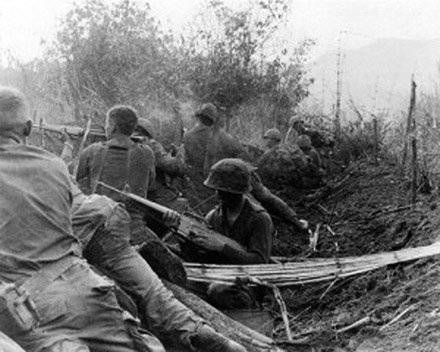
Column
The town of Long Bin was in the area of responsibility of the 3 Corps. Supply of parts and hull connections was carried out by the divisions of the 48 transport group. Its 6 battalion consisted of light, and the 7 battalion included medium trucks. Long Bin received cargo from Saigon and then distributed and delivered it throughout the region.
25 August was the usual day of the monsoon season. The clouds hung low and made helicopter flights dangerous, while intermittent but heavy showers flooded the area.
A large transport convoy, consisting of an 81 truck and supplying troops, was sent to Long Binh in three groups. Six refrigerators headed the convoy, trucks drove behind them, and vehicles with ammunition and fuel closed the column. The convoy was moving westwards on route No. 1 from Saigon through the former camp of the Xu Numx Infantry Division of Chu Chi. Here the column was divided into two groups. The convoy supplied the 25 Brigade of the 1 Infantry Division, which was stationed just seven kilometers from the border with Cambodia.
As a rule, the 1 and 3 brigade units of the 25 division provided security for the convoy, but this time the new division commander, Major General Ellis Williamson, ordered the 3 brigade to advance to Saigon.
This reduction in attracted forces led to dire consequences and played into the hands of the Viet Cong.
Ambush
Through the village of Ap Nkhi and the Ben Chu rubber plantation, which had the local name “Little Rubber,” passed a detour of the 22 route about a mile long. The village of Ap Nkhi was surrounded by agricultural land, and on the “Little Rubber” plantation, near the road, there were rubber trees about 4 – 5 meters in height. A drainage ditch and earthen berms followed the trees along the road. The units of the 88 regiment of the North Vietnamese army moved to the “Little Rubber” on the evening of August 24 to prepare for an ambush. In 11.45, the column went to the quiet village of Ap Nkhi. It was raining and there was fog, the clouds were low, about 60 meters above the ground.
The column of partisans was open, which looked like a column of soldiers from the army of the Republic of Vietnam, whose regime was supported by the Americans. As soon as the American vehicles with ammunition and fuel came up to this column, the Vietnamese opened fire on the cars. Only then did the Americans realize that the soldiers moving in a parallel course were part of Viet Cong partisans. At the same time, the fighters of the North Vietnamese army, who had previously taken positions under the cover of the “Little Rubber” trees, also opened intensive fire from grenade launchers, machine guns and machine guns on transport. The first target of the Vietnamese were eight jeeps, accompanying the convoy, and then the first machine with fuel was set on fire by the RPG, blocking the vehicles ahead of them. Two cars with fuel tried to go around it, but failed. Thirty trucks, which were walking at the beginning of the column, went ahead, not stopping, following the requirements of the instructions. For about a mile, an 51 vehicle has come under fire. As a result of enemy fire at the tail of the column, two trailers caught fire carrying 105-mm projectiles, thus leaving the column without maneuver. The drivers got out of the cars and took up the defense, hiding behind their cars or in a ditch that runs along the road. The enemy carefully and very reasonably organized an ambush, and therefore the battle went beyond the reach of artillery fire of the 1 th brigade. The weather also played into the hands of the attackers, because low clouds did not allow helicopters to cover the immobile column. Locking in a trap car and leaving a cover, the Vietnamese rushed at her.
Aviation support
Two Huey fire support helicopters with machine guns mounted in the doorway, carrying an 14 rocket launcher on board, arrived to help ambush. From the height we could see the American drivers who were shooting, lying in a ditch, and Viet Cong, who were trying to unload the trucks. Working from a low altitude, the pilots tried to avoid falling from the ground and struggled to fire at the enemy. Usually, the Huey helicopter is diving at a target from a height of about 450 meters. But now the pilots had to fly over the treetops and fire rockets on a flat trajectory, almost point-blank, while constantly making maneuvers in order to evade enemy ground fire. Helicopters flew over the very tops of the trees, trying to fire from machine guns mounted at the door, and firing missiles at the enemy, which was practically everywhere. When the supply of ammunition dried up, and the fuel remained only on the way back, the pilots called themselves to replace the next pair of helicopters.
Ground battle for the column
Units of the 1st brigade arrived at the battlefield only at 14.30. The delay occurred due to communication problems, as well as due to the large distance from the ambush site. By the indicated time, the battlefield arrived Tanks and infantry, and after half an hour, helicopters landed two more companies. However, due to the fact that the burning fuel trucks blocked the road, the tanks could not pass to assist the drivers leading the battle, and the enemy’s dense fire forced the infantry to lay down. The department of the 65th Engineering Battalion, with the support of two armored personnel carriers, checked the road for possible mining and allowed approaching the blocked convoy from the rear. But since the sappers still could not drive past the burning cars with ammunition, being also under heavy enemy fire, they also had to join the battle.
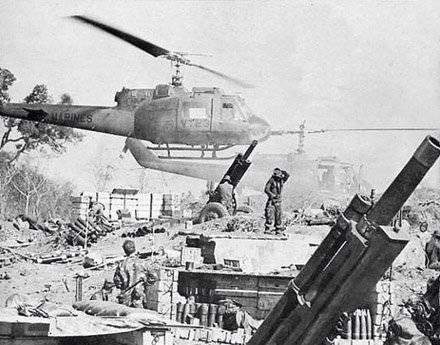
The fight lasted a few more hours. Five tractors and jeeps with machine guns, which had already arrived in Tai Nin, left the trucks there and returned to the ambush site to help pull away the damaged cars and restore traffic on the road. By this time, the American infantry finally took control of the main fire destruction zone of the column. Approximately to 21.00, an armored cavalry unit arrived at the tail of the column and forced the enemy to withdraw.
Seven drivers died, ten were injured and two were captured. The units that arrived to the rescue, lost another 23 person killed and 35 - wounded.
Conclusion
The Vietnamese acted by delivering constant, perceptible blows at the enemy, using the tactics of "wasps stinging a buffalo." When the enemy attempted to carry out large-scale operations against them, they shied away from the battle, “like bamboo, in order to straighten again” and again begin to sting the enemy. The fact that such a tactic turned out to be effective in the end showed the forced withdrawal of American troops from Vietnam.
Information